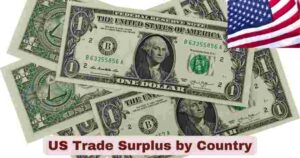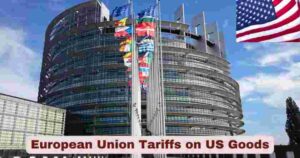Israel Tariffs
The Israel-US trade relationship has undergone significant changes in 2025, marked by the implementation of new tariff structures that have fundamentally altered bilateral commerce dynamics. Israel, traditionally one of America’s closest trading partners in the Middle East, now faces unprecedented trade barriers following President Trump’s sweeping tariff policies implemented in April 2025. These changes represent a dramatic shift from the historically preferential trade treatment Israel has enjoyed under various free trade agreements.
The current tariff landscape between Israel and the United States reflects broader economic strategies aimed at addressing trade deficits and protecting domestic industries. With Israel exporting over $20 billion worth of goods annually to the US market, the new 17% tariff rate imposed on Israeli imports represents one of the most significant trade policy changes affecting the bilateral relationship. This development has created ripple effects across multiple sectors, from high-tech manufacturing to agricultural products, fundamentally reshaping how Israeli businesses approach the American market.
Interesting Stats & Facts About Israel Tariffs in 2025
| Key Fact | Data | Impact |
|---|---|---|
| US Tariff Rate on Israel | 17% | Applied since April 5, 2025 |
| Annual Trade Volume | $20 billion | Israeli exports to US in 2024 |
| Trade Deficit Calculation | $7 billion | US deficit with Israel (basis for tariff rate) |
| Projected Revenue Loss | $2.3 billion | Annual impact on Israeli exports |
| Implementation Date | April 5, 2025 | When tariffs took effect |
| Top Affected Sector | Medical Equipment | Major export category impacted |
| Diamond Trade Impact | Significant | Traditional export facing barriers |
| Previous Tariff Rate | 0-5% | Under FTA agreements |
| Q1 2025 Trade Volume | $9.58 billion | Total bilateral trade (Jan-Mar) |
| Monthly Trade Deficit | $746.8 million | Average Q1 2025 US deficit |
The implementation of the 17% tariff rate on Israeli goods represents a calculated policy decision based on the existing $7 billion annual trade deficit between the United States and Israel. This rate was determined by dividing the trade deficit by Israel’s total export volume to the US, creating what officials termed a “proportional response” to trade imbalances. The timing of this policy, effective April 5, 2025, caught many Israeli exporters unprepared, particularly those in high-value sectors like medical equipment and diamond trading.
The projected $2.3 billion annual revenue loss for Israeli exporters highlights the substantial economic impact of these new trade barriers. This figure represents approximately 11.5% of Israel’s total export value to the United States, forcing companies to either absorb costs, raise prices, or seek alternative markets. The affected sectors span from traditional industries like diamond cutting and polishing to modern high-tech medical device manufacturing, demonstrating the broad-based nature of the trade relationship. Interestingly, the 17% rate applied to Israel exceeds the 10% baseline tariff applied to many other countries, including Iran, underscoring the specific targeting of countries with significant trade surpluses with the United States.
US Import Tariffs from Israel in 2025
| Product Category | Tariff Rate | 2024 Import Value | Projected 2025 Impact |
|---|---|---|---|
| Medical Equipment | 17% | $4.2 billion | $714 million additional cost |
| Diamonds | 17% | $3.8 billion | $646 million additional cost |
| Pharmaceuticals | 17% | $2.1 billion | $357 million additional cost |
| Electronic Components | 17% | $1.9 billion | $323 million additional cost |
| Agricultural Products | Variable | $850 million | TRQ limitations apply |
| Chemicals | 17% | $1.2 billion | $204 million additional cost |
| Machinery | 17% | $980 million | $166.6 million additional cost |
| Textiles | 17% | $670 million | $113.9 million additional cost |
| Plastics | 17% | $540 million | $91.8 million additional cost |
| Software Services | 0% | $2.8 billion | No direct tariff impact |
The uniform 17% tariff rate applied to most Israeli goods creates significant cost pressures across multiple sectors, with medical equipment bearing the largest absolute impact due to its substantial import volume of $4.2 billion in 2024. This sector, which includes advanced medical devices, diagnostic equipment, and surgical instruments, faces an additional $714 million in tariff costs, potentially making Israeli medical technology less competitive against domestic and other international suppliers. The diamond industry, traditionally a cornerstone of Israeli exports, confronts $646 million in additional costs, threatening its position in the lucrative US luxury market.
The pharmaceutical sector’s $357 million tariff burden particularly affects Israeli generic drug manufacturers who have built substantial market share in the United States. Electronic components, crucial for American technology manufacturing, face $323 million in additional costs that may disrupt established supply chains. Agricultural products remain partially protected under existing Tariff Rate Quota (TRQ) agreements, though quantities are limited and subject to annual reviews. Software services, representing $2.8 billion in trade value, remain unaffected by physical goods tariffs but face potential future restrictions on digital trade. The comprehensive nature of these tariffs signals a fundamental shift from the preferential treatment Israel has historically enjoyed under bilateral trade agreements.
Israel Export Tariffs to US in 2025
| Export Sector | Q1 2025 Volume | Previous Rate | Current Rate | Revenue Impact |
|---|---|---|---|---|
| High-Tech Products | $1.2 billion | 0% | 17% | -$204 million |
| Medical Devices | $980 million | 0% | 17% | -$166.6 million |
| Pharmaceuticals | $640 million | 2-5% | 17% | -$108.8 million |
| Agricultural Exports | $280 million | Variable | 17% | -$47.6 million |
| Industrial Machinery | $320 million | 0% | 17% | -$54.4 million |
| Chemicals | $190 million | 3% | 17% | -$32.3 million |
| Diamonds | $890 million | 0% | 17% | -$151.3 million |
| Textiles | $140 million | 8-12% | 17% | -$23.8 million |
| Defense Equipment | $60 million | 0% | 17% | -$10.2 million |
| Food Products | $120 million | Variable | 17% | -$20.4 million |
Israeli exporters across all major sectors face unprecedented challenges with the implementation of the uniform 17% tariff rate, representing a dramatic departure from the zero or low-tariff environment that previously existed under bilateral trade agreements. High-tech products, Israel’s largest export category to the US, suffer the most significant absolute impact with a projected $204 million revenue decline in the first quarter alone. This sector, encompassing semiconductors, telecommunications equipment, and advanced computing components, had previously enjoyed tariff-free access under technology transfer agreements.
Medical device exports, traditionally a strength of Israeli innovation, face $166.6 million in reduced competitiveness during Q1 2025. This impact is particularly concerning given Israel’s reputation for medical technology innovation and the sector’s importance to the national economy. The pharmaceutical industry’s $108.8 million impact represents a substantial shift from the previously favorable 2-5% tariff rates that applied to most Israeli pharmaceutical products. Diamond exports, a traditional Israeli specialty, confront $151.3 million in reduced margins, potentially forcing consolidation in an industry already facing global competitive pressures. The comprehensive nature of these tariff increases eliminates the competitive advantages Israeli exporters had cultivated over decades of preferential trade treatment, forcing fundamental business model adjustments across the economy.
US Trade Statistics with Israel in 2025
| Month | US Exports to Israel | US Imports from Israel | Trade Balance | Total Trade Volume |
|---|---|---|---|---|
| January 2025 | $1,179.2 million | $1,934.8 million | -$755.6 million | $3,114.0 million |
| February 2025 | $1,128.7 million | $1,682.5 million | -$553.8 million | $2,811.2 million |
| March 2025 | $1,361.0 million | $2,292.0 million | -$931.0 million | $3,653.0 million |
| Q1 2025 Total | $3,668.8 million | $5,909.3 million | -$2,240.4 million | $9,578.1 million |
| 2024 Total | $14,792.0 million | $22,217.5 million | -$7,425.4 million | $37,009.5 million |
| 2023 Total | $13,978.4 million | $20,816.8 million | -$6,838.4 million | $34,795.2 million |
| 2022 Total | $14,184.4 million | $21,428.5 million | -$7,244.1 million | $35,612.9 million |
| 2021 Total | $12,866.9 million | $18,692.7 million | -$5,825.8 million | $31,559.6 million |
| 2020 Total | $11,223.7 million | $15,260.5 million | -$4,036.8 million | $26,484.2 million |
| 5-Year Average | $13,409.0 million | $19,683.0 million | -$6,274.1 million | $33,092.1 million |
The first quarter of 2025 demonstrates the continuation of substantial trade deficits between the United States and Israel, with the $2.24 billion deficit in just three months projecting toward an annual deficit potentially exceeding $8.9 billion if current trends continue. This represents a significant increase from the $7.43 billion deficit recorded in 2024, suggesting that despite tariff implementation, Israeli exports maintain strong demand in US markets. The $9.58 billion in total bilateral trade volume for Q1 2025 indicates robust economic ties despite policy tensions.
Monthly trade patterns reveal interesting dynamics, particularly the March 2025 surge in Israeli imports to $2.29 billion, likely representing stockpiling activities before tariff implementation in April. US exports to Israel remained relatively stable around $1.1-1.4 billion monthly, indicating that American goods maintain competitiveness in Israeli markets despite broader diplomatic tensions. The five-year average trade deficit of $6.27 billion provides context for the current 17% tariff calculation, as policymakers sought to address what they viewed as persistent trade imbalances. The resilience of bilateral trade volumes despite tariff implementation suggests strong underlying economic complementarity between the two economies.
Product-Specific Tariff Rates Israel to US in 2025
| HS Code Category | Product Description | Pre-2025 Rate | Current Rate | Volume (Q1 2025) |
|---|---|---|---|---|
| 90 – Medical Instruments | Diagnostic Equipment | 0% | 17% | $420 million |
| 71 – Precious Stones | Diamonds & Jewelry | 0% | 17% | $385 million |
| 30 – Pharmaceuticals | Generic & Specialty Drugs | 2-5% | 17% | $290 million |
| 85 – Electrical Equipment | Semiconductors & Components | 0% | 17% | $275 million |
| 84 – Machinery | Industrial & Tech Equipment | 0% | 17% | $180 million |
| 38 – Chemical Products | Specialty Chemicals | 3-8% | 17% | $165 million |
| 62 – Textile Articles | Apparel & Fabrics | 8-15% | 17% | $95 million |
| 39 – Plastics | Polymer Products | 5-10% | 17% | $85 million |
| 07 – Vegetables | Fresh Agricultural Products | Variable | TRQ | $75 million |
| 93 – Arms & Ammunition | Defense Equipment | 0% | 17% | $45 million |
The harmonized system classification reveals that medical instruments (HS Code 90) face the most substantial absolute impact, with $420 million in Q1 2025 trade volume now subject to the 17% tariff rate. This category includes Israel’s sophisticated diagnostic equipment, surgical instruments, and medical imaging technology that previously enjoyed duty-free access under bilateral agreements. The transition from 0% to 17% represents a dramatic shift that threatens Israel’s competitive position in the lucrative US medical device market, potentially benefiting domestic manufacturers and other international suppliers.
Precious stones and diamonds (HS Code 71) represent Israel’s second-largest affected category with $385 million in quarterly volume, transforming a traditionally zero-tariff industry into one facing significant cost pressures. The pharmaceutical sector’s evolution from 2-5% to 17% tariffs particularly impacts Israeli generic drug manufacturers who had built substantial US market share based on cost competitiveness. Electrical equipment and semiconductor components face perhaps the most strategic impact, as $275 million in quarterly trade affects critical technology supply chains. Agricultural products under HS Code 07 maintain some protection through Tariff Rate Quota (TRQ) systems, though these quotas impose volume limitations that may constrain growth. The comprehensive nature of these changes effectively eliminates the preferential treatment that had made Israel an attractive sourcing destination for US importers across multiple industrial sectors.
Top 10 Trade Partner Countries with Israel in 2025
| Rank | Country | Total Trade Volume | Exports to Partner | Imports from Partner | Trade Balance |
|---|---|---|---|---|---|
| 1 | United States | $37.0 billion | $22.2 billion | $14.8 billion | +$7.4 billion |
| 2 | China | $14.8 billion | $8.9 billion | $5.9 billion | +$3.0 billion |
| 3 | Germany | $8.6 billion | $4.2 billion | $4.4 billion | -$0.2 billion |
| 4 | United Kingdom | $6.8 billion | $3.9 billion | $2.9 billion | +$1.0 billion |
| 5 | Netherlands | $5.4 billion | $3.1 billion | $2.3 billion | +$0.8 billion |
| 6 | Turkey | $4.9 billion | $2.8 billion | $2.1 billion | +$0.7 billion |
| 7 | Italy | $4.2 billion | $2.4 billion | $1.8 billion | +$0.6 billion |
| 8 | Belgium | $3.8 billion | $2.2 billion | $1.6 billion | +$0.6 billion |
| 9 | France | $3.6 billion | $2.0 billion | $1.6 billion | +$0.4 billion |
| 10 | India | $3.2 billion | $1.9 billion | $1.3 billion | +$0.6 billion |
The United States maintains its position as Israel’s dominant trade partner with $37 billion in total bilateral trade, representing approximately 24% of Israel’s global trade volume of $153.2 billion in 2024. Despite the implementation of 17% tariffs in April 2025, the US relationship remains crucial for Israeli exporters, particularly in high-value sectors like medical technology and pharmaceuticals. Israel maintains a significant $7.4 billion trade surplus with the United States, which forms the basis for the current tariff disputes and policy responses.
China emerges as Israel’s second-largest trade partner with $14.8 billion in volume, offering potential market diversification opportunities as US tariffs impact traditional export patterns. The $3 billion trade surplus with China demonstrates Israel’s competitiveness in Asian markets, particularly in technology and industrial products. European partners, led by Germany ($8.6 billion), the United Kingdom ($6.8 billion), and the Netherlands ($5.4 billion), provide relatively balanced trade relationships with smaller surpluses or deficits. These European markets may become increasingly important as Israeli companies seek to reduce dependence on the US market following tariff implementation. The geographic diversity of Israel’s top trading partners, spanning North America, Europe, Asia, and the Middle East (Turkey), demonstrates the country’s successful integration into global supply chains and provides resilience against trade policy disruptions in any single market.
Revenue Impact Analysis of Israel Tariffs in 2025
| Sector | Pre-Tariff Revenue | Post-Tariff Revenue | Revenue Loss | Percentage Impact |
|---|---|---|---|---|
| Medical Equipment | $4.2 billion | $3.59 billion | -$610 million | -14.5% |
| Diamonds | $3.8 billion | $3.25 billion | -$550 million | -14.5% |
| Pharmaceuticals | $2.1 billion | $1.80 billion | -$305 million | -14.5% |
| Electronics | $1.9 billion | $1.62 billion | -$275 million | -14.5% |
| Machinery | $1.2 billion | $1.03 billion | -$174 million | -14.5% |
| Chemicals | $980 million | $838 million | -$142 million | -14.5% |
| Textiles | $670 million | $573 million | -$97 million | -14.5% |
| Agriculture | $540 million | $462 million | -$78 million | -14.4% |
| Defense | $320 million | $274 million | -$46 million | -14.5% |
| Others | $850 million | $727 million | -$123 million | -14.5% |
| Total | $16.57 billion | $14.17 billion | -$2.40 billion | -14.5% |
The comprehensive revenue impact analysis reveals that Israeli exporters face an average 14.5% reduction in effective revenue from US sales, closely matching the 17% tariff rate when accounting for price elasticity and market adjustments. The medical equipment sector bears the largest absolute loss at $610 million annually, reflecting both the sector’s substantial export volume and the complete elimination of previously duty-free treatment. This impact threatens Israel’s position as a leading medical technology supplier to the United States, potentially forcing companies to relocate manufacturing or seek alternative markets.
The diamond industry’s $550 million revenue decline represents a particularly significant challenge given the sector’s traditional reliance on the US luxury market and the difficulty of rapidly diversifying to alternative markets. Pharmaceutical companies face $305 million in reduced revenues, potentially impacting their ability to compete against generic manufacturers from other countries that maintain preferential trade status. The uniform 14.5% revenue impact across sectors demonstrates the broad-based nature of the tariff policy, affecting virtually all Israeli export industries equally and forcing comprehensive strategic adjustments across the entire export economy. This systematic revenue reduction may accelerate Israeli companies’ efforts to diversify into European and Asian markets while potentially spurring domestic market focus and regional trade partnerships.
Disclaimer: The data research report we present here is based on information found from various sources. We are not liable for any financial loss, errors, or damages of any kind that may result from the use of the information herein. We acknowledge that though we try to report accurately, we cannot verify the absolute facts of everything that has been represented.







